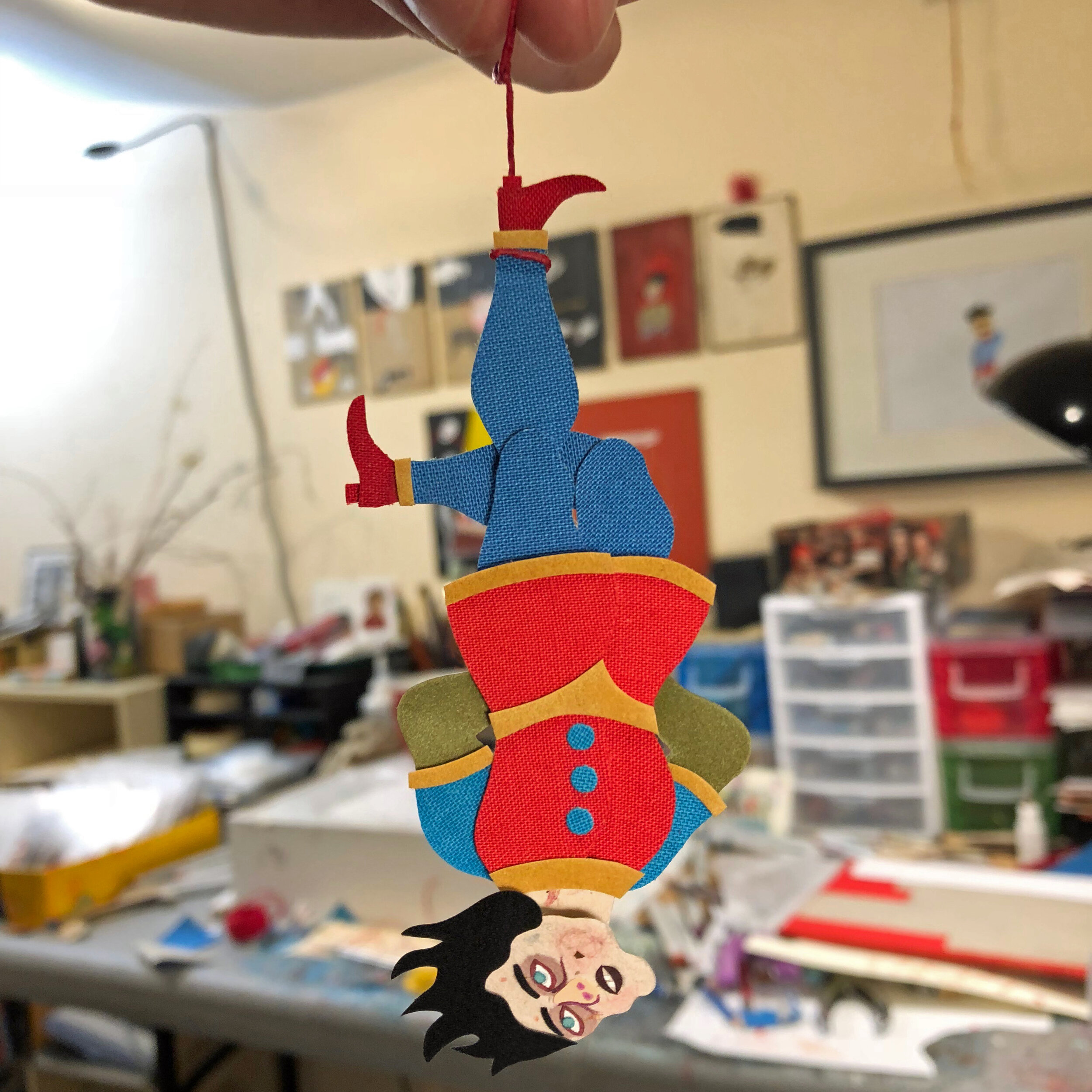Luca Dipierro - Featured Animation
Editor’s note: For more on this fascinating medium, see Luca’s artist statement at the end of this post.
The Cadence
The Cadence is my first animated feature. It’s a work in progress I began in 2015, filmed in stop-motion using marionettes made of paper, old book cloth, and thread.
The scene is a forest, populated by bizarre characters who enter and exit swiftly, as on a puppet theatre stage: masked children waiting for the last leaf to fall; a wide-eyed boy, lover of silence; a murderer carving letters in tree bark; a bear hiding in a closet; a horse escaped from a sausage factory; a sorrowful librarian; a hunter hunted; and many more.
The time is the fall, a season of repetition and suddenness and waiting. By way of encounter— apparition, flight, jump, stare, fight, dance, touch, caress, blow, wound, fugue—the characters move from tenderness to violence, from solitude to longing, from mourning to feast, from stasis to trajectory. Their destination, the end of the story, is the start of a history without violence or labor.
19th-century movable books, The Cadence is a film without dialogue, carried entirely by images and by the music of Rev. Freddie and Chiara Lee (of the late band Father Murphy). The gracefulness and limited range of the marionettes’ limbs point to our own physicality. The Cadence is filled, like all plays of puppetry, with accidents, happening to and from bodies. Dressed in brightly colored textures, it is a vision of utopia, a concrete Land of Cockaigne of what-is-not-yet. As Baruch Spinoza wrote: “no one yet has determined what the body can do.”
Cut-outs: Making The Cadence
Click image to proceed
Stills from The Cadence
Click image to proceed
Dressed in Bookcloth
My animations come from my love for/obsession with books as physical objects. I work in stop motion, using cut-out marionettes. I build all the figures and backdrops with paper, cloth, and thread derived from discarded hardcover volumes. All my characters are literally dressed with books. I am interested in texture, in the intimate, lyrical resonance that small things are able to communicate when they are enlarged. My animations are both bi- and tridimensional. Everything happens on a flat surface and yet there are small depths, illusory perspectives, tiny shadows, creases, rips, folds, holes.
I also use other found materials—dirt, wood, hair, wax etc. I go on walks and pick up insignificant objects off the street, a piece of glass, a rusty screw, a broken watch. These objects bring into my films a worn quality, their own history of wear and tear. I just have to put them in front of a character, and wait for an unexpected dynamic to be set in motion. Rather than telling a linear story, it’s this realm of surprise that I am interested in. I construct encounters, apparitions, accidents, and see how the characters react. Their behavior is not entirely up to me. It has been known for centuries: marionettes have a life on their own. Their limbs are “dead, pendulum-like”, as Heinrich von Kleist writes in his essay “On the Marionette Theatre” (1801), and “follow mechanically on their own without anything else needing to be done.” In my work, the cut-outs are laid flat, resting on a surface, and there is a strange mixture of obedience and resistance in their movements, caused by the friction with the cloth. I am never sure whether I am leading them or they are leading me. Von Kleist has written beautiful pages about the relation between puppeteer and marionette, and about the grace that marionettes possess, “particularly the smaller ones.” All my figures are only two or three inches tall. In the delicacy of their tiny, flimsy mechanism of paper, cloth, string is inscribed their own specific way of (re)acting, and their own specific way of manifesting their loneliness and longing.






























